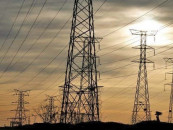Govt defers approval of new IGCEP
K-P, Punjab raise issues of adverse impact of plan on relations with China, growth

A cabinet body on Monday deferred approval of a World Bank dictated new power generation capacity plan after governments of Khyber-Pakhtunkhwa (K-P) and Punjab raised issues of adverse impact of the plan on relations with China and economic growth.
The meeting of the Cabinet Committee on Energy (CCOE) had been called to give approval of the Indicative Generation Capacity Expansion Plan – known as IGCEP 2021-30. The IGCEP policy approval is a pre-condition for the release of the $400 million loan tranche that the World Bank approved in June but stopped its disbursement.
According to official documents and sources, if the IGCEP policy is approved in its present shape, Pakistan’s economic relations with China will be hurt while the country would remain entangled in an economic growth rate of 4% to 5%.
The IGCEP has been prepared on the assumption are that the country would grow at a rate of 4% to 5% from now onwards till 2030 and electricity demand is taken suppressed based on load-shedding, said the sources.
If the IGCEP is approved in its present form, the 3,300 megawatts Chashma-5 nuclear power plant may not get commissioned by 2027, two LNG-fired power plants of 2,443 MW of the Punjab government would get minimum dispatch orders and the 1,320MW Sahiwal coal-fired power plant would be run only at 50% of the capacity, said the sources.
Not only that but the hydropower projects of K-P would never be part of the national grid, said the sources.
The CCOE and the federal cabinet had already approved the IGCEP 2021-30 in April this year to qualify for the World Bank’s $400 million loan. Subsequently, the Council of Common Interests (CCI) did not approve the IGCEP assumptions and asked the federal government to seek input of the provinces.
CCOE Chairman Asad Umar directed the energy ministry to sit with the provinces and address their concerns. The sources said that Umar agreed that the energy ministry did not use the government’s projections for economic growth.
The plan has been prepared by the Ministry of Energy as part of the World Bank loan condition. The World Bank has given a three-month deadline to implement conditions for releasing the money or else the loan pact will be terminated by end September, showed an agreement signed by both the sides.
The sources said that the Strategic Plan Division had sought inclusion of the Chahsma-5 Nuclear Power Plant in the list of committed category as the government-to-government project. At the moment, the federal government has kept it as a candidate project despite signing a commercial agreement with China.
But the Power Division is of the view that there was no final approval of the project as government-to-government deal and the only approval was for finalisation of the mode of financing, designing and securing the approval of the project by the government.
The framework agreement for construction of the 3,300MW Chashma project had been signed in April 2015 during the visit of the Chinese president to Pakistan. The project is expected to be commissioned by December 2027.
K-P objections
The K-P government has objected to using low economic growth, low electricity consumption and using suppressed electricity demand for making the IGCEP.
The government has assumed that the economy will grow in between 4% to 5% and the power consumption is also assumed lower than the historical patterns. For this year, the government has assumed 4% GDP growth, lower than the official target, and for next year at only 4.5%.
The K-P government has assumed that the economy will start growing at the rate of 6% from 2023-24 and will peak to 7% in 2027 onwards. The provincial government has pointed out that the GDP growth projections in the IGCEP are currently below official national targets.
However, the Ministry of Energy admitted that the economic growth forecasts have been taken from the World Bank and the International Monetary Fund (IMF).
There is also an additional demand potential of 2,500MW if the existing per capita consumption is taken at 320 units per person per year from current 185 units, according to the provincial government.
The GDP to power demand multiplier used is too low, may not be adequate for the industrialisation needs of the country and needs to be revisited, according to the K-P government. The policy has used very low 0.85 GDP to power demand multiplier as against long-term demand multiplier of 1.2.
“The poor planning and execution of the last 10 years, and the lack of investment in the transmission and distribution must not become biases that impact independent assessment and evaluation of the evaluation of the power sector needs of the country,” the provincial government wrote to the federal government last month.
It is important that the IGCEP be based on the stakeholders’ feedback and supports the development aspirations of a country of over 220 million people, it added.
The IGCEP and the National Electric Policy must cater to the objective of providing access to electricity to every citizen in the country and to get rid of load-shedding, support the government’s aspirational economic growth agenda.
K-P has also demanded that the list of committed projects need to include provincial government’s projects. The federal government has not included 157MW Madyan hydropower power, 88MW Gabrol Kalam hydropower project and 41MW Koto hydropower project.
Punjab too objects
The Punjab government has warned the federal government that the IGCEP could hurt its relations with China.
The IGCEP has assumed that the RLNG and imported coal-based power plants will be given a minimum dispatch as per their contractual obligations till expiry of their contracts.
The sources said that the Punjab government has objected to this policy of not buying electricity from these RLNG and coal-fired power plants and instead paying them capacity charges. The Punjab government said that “disadvantageous treatment to 1,320MW Sahiwal power plant of the CPEC “would be against the spirit of CPEC framework agreement and would hurt the cooperation environment between Pakistan and China”.
The Punjab government also agitated the federal government’s decision to take minimum electricity from its owned two LNG-fired power plants of 1,180 MW Bhikki and 1,263MW Trimmu. It said that limiting power dispatches from these projects would also undermine their privatisation prospects.
Power Division stance
The sources said that Power Division was of the view that under Article 157 (2) of the constitution, the provincial governments may make their own electricity policies and install power projects as long as these projects do not impose any financial obligations of the federal government. Such projects can only be connected to the national grid with the consent of the federal government.
If the demands of provinces and Strategic Plan Division are incorporated, it is estimated that public exchequer will have to bear Rs1.35 trillion in excess with a possible increase of Rs1.2 per unit in price of electricity on this account.
The Power Division is of the view that the original set of IGCEP assumptions approved by the federal government may form the basis of the IGCEP and be submitted to the CCI for consideration.



















COMMENTS
Comments are moderated and generally will be posted if they are on-topic and not abusive.
For more information, please see our Comments FAQ